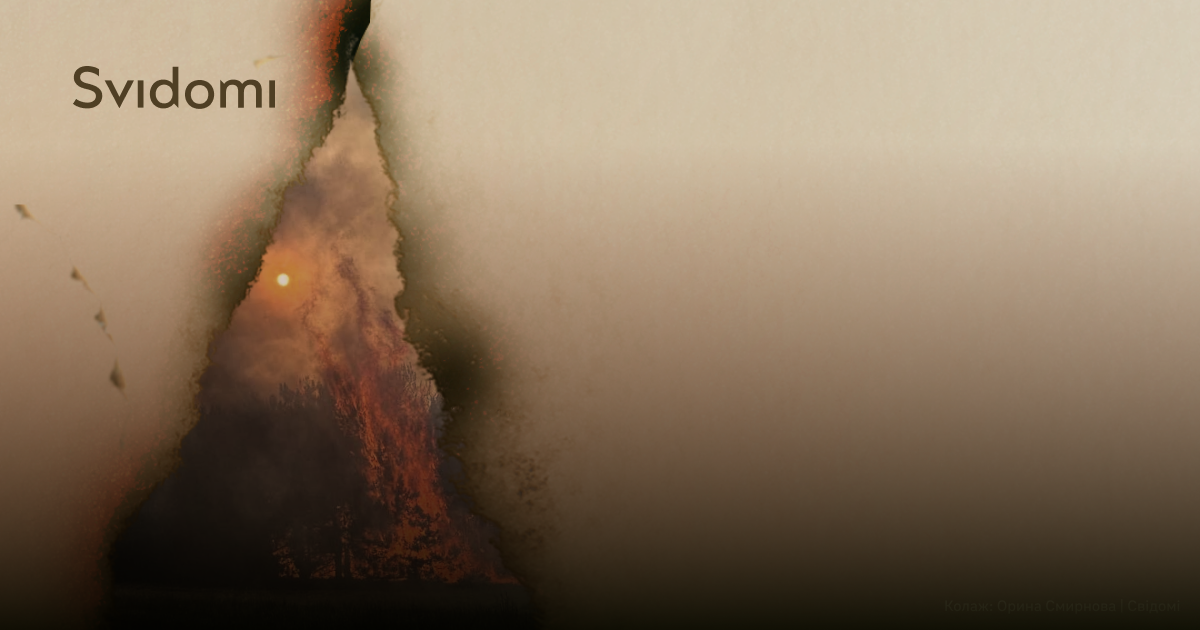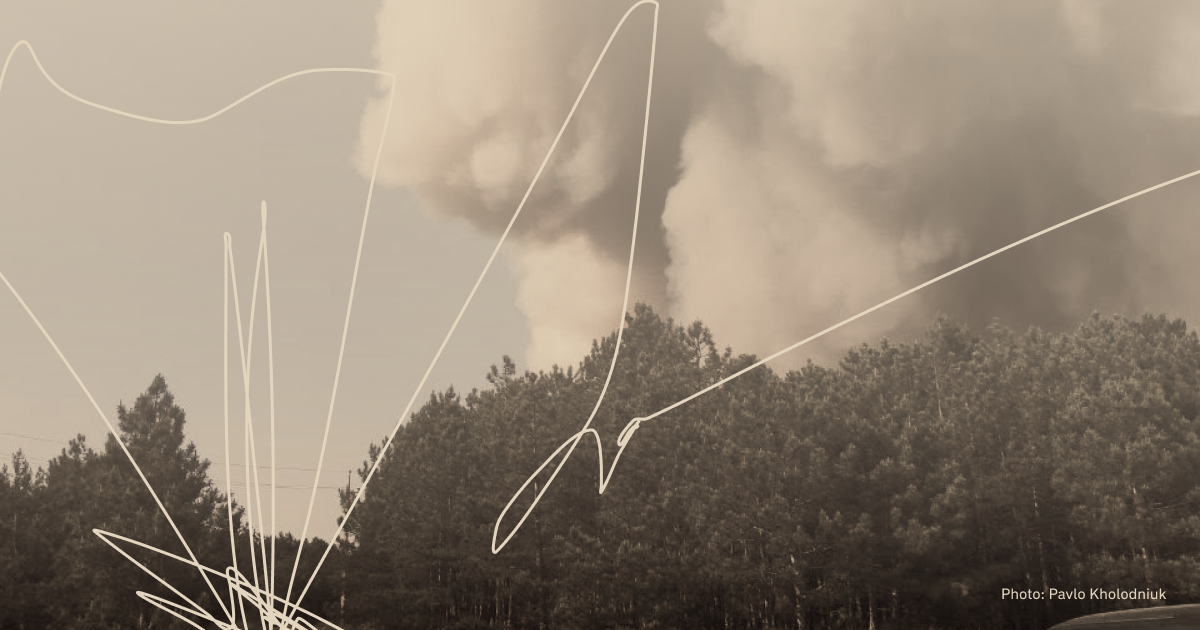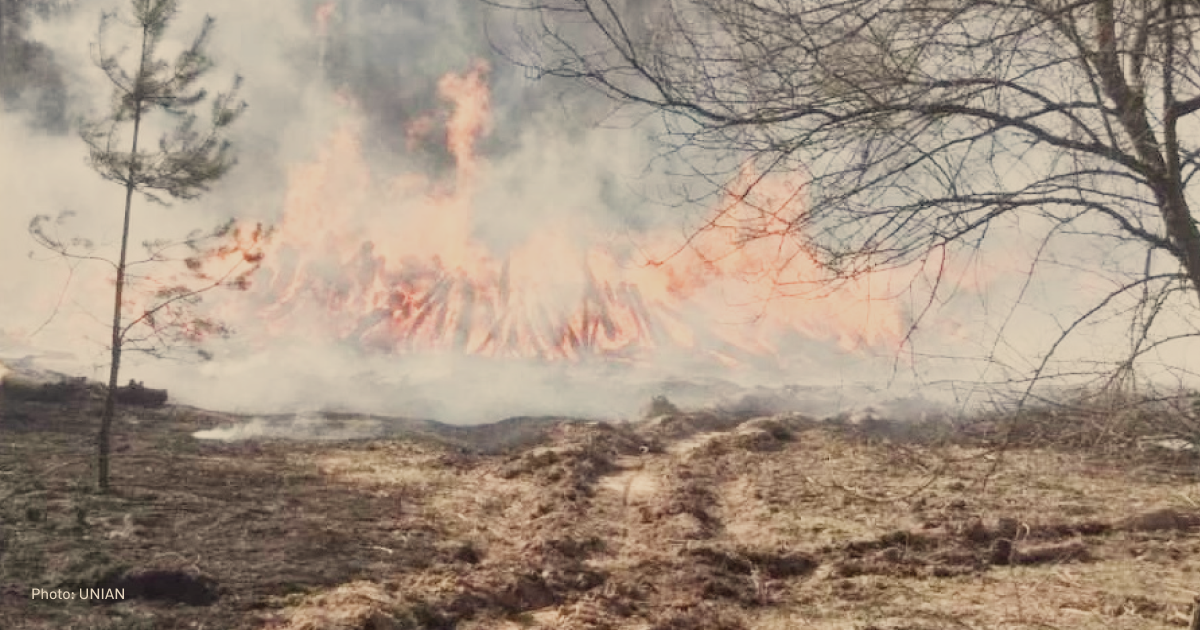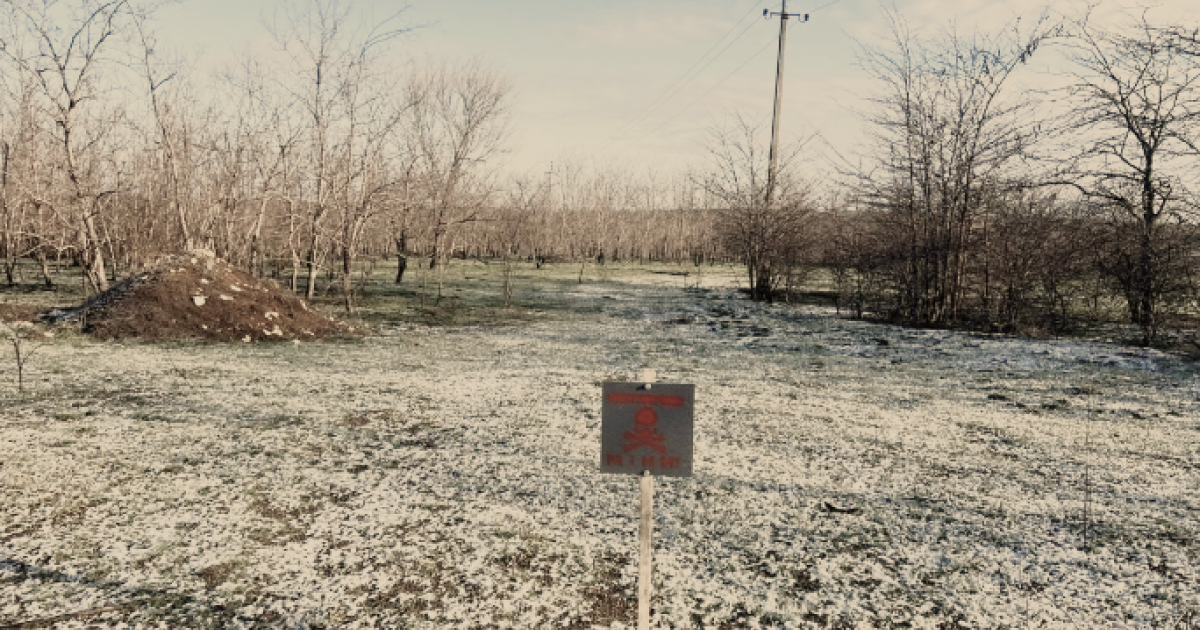How Russia is destroying Ukraine’s Nature Reserve funds in the south

According to Ruslan Strilets, Minister of Environmental Protection and Natural Resources, Ukraine has lost almost six thousand hectares of the Askania Nova biosphere reserve in the Kherson region since the start of the full-scale invasion in 2022.
Fires, ecosystem destruction, animal theft and military use are just some examples of the Russian army's damaging activities in Ukraine's protected areas.
According to data provided to Svidomi by the Ministry of Environmental Protection and Natural Resources, the Russians have occupied more than 500 territories and nature reserves covering an area of about 0.8 million hectares. Since February 24, the Russian army has damaged about 800 biosphere reserves covering an area of 1.24 million hectares.
Svidomi talks about some protected areas in the south of Ukraine and the consequences of active hostilities after February 2022.
How Russia is destroying Ukraine’s Nature Reserve funds in the south
According to Ruslan Strilets, Minister of Environmental Protection and Natural Resources, Ukraine has lost almost six thousand hectares of the Askania Nova biosphere reserve in the Kherson region since the start of the full-scale invasion in 2022.
Fires, ecosystem destruction, animal theft and military use are just some examples of the Russian army's damaging activities in Ukraine's protected areas.
According to data provided to Svidomi by the Ministry of Environmental Protection and Natural Resources, the Russians have occupied more than 500 territories and nature reserves covering an area of about 0.8 million hectares. Since February 24, the Russian army has damaged about 800 nature reserves covering an area of 1.24 million hectares.
Svidomi talks about some protected areas in the south of Ukraine and the consequences of active hostilities after February 2022.
Fires almost every day on the Kinburn Peninsula
The biosphere reserve covers almost 85% of the Kinburn Peninsula, Mykolaiv region. There is the Ivory Coast of Sviatoslav National Nature Park (which includes the Kinburn Spit) and parts of the Black Sea Biosphere Reserve. These areas are currently under temporary Russian occupation.
Since then, the protected areas have suffered from shelling and forest fires, including those caused by active hostilities, equipment redeployment, and mining.
According to Pavlo Kholodniuk, the reserve's deputy director, 449 fires have been recorded in the Ivory Coast of Sviatoslav National Nature Park alone since February 2022 (as of July 15).

The affected area is 8395.40 hectares. Some plots have burned twice, three times or more. Fires occur almost every day. They overlap, which makes it difficult to study their consequences.
"It's about the destruction of nature and all living things. The Russian military does not fight the fires. Instead, they set fire to the reed beds themselves to increase their visibility and counter Ukrainian intelligence," says the reserve's deputy director.
In addition to the fires, heavy equipment, fuel and lubricant spills, and fortifications such as trenches and mines constructed by the Russians in the protected areas of the Kinburn Peninsula have a negative impact.
Monitoring and recording impacts
Monitoring is done remotely using satellite imagery from Sentinel-2, Lancet-8 and Lancet-9. It is impossible to assess the damage caused by Russia during active hostilities.

"We can only draw conclusions from a field survey after the end of hostilities. However, some fires will no longer be visible during such a survey because of the grassland vegetation, which can regenerate itself," says Pavlo Kholodniuk in a comment to Svidomi.
The final disappearance of certain plants or animals will also be estimated after the evacuation. But some consequences are already visible.
For example, waterfowl (coastal birds) do not return to the peninsula and do not nest there, mainly because of fires and shelling.

"There are about 3,500 species of insects, some of which are rare or unique to the Kinburn Peninsula. Their condition has deteriorated, but it is not yet known whether they will disappear [completely],"
says Kholodniuk.
The Kinburn Peninsula is home to the largest orchid field in Europe. In July 2024, a fire broke out in part of the field. The final consequences for the plant will be clear after a comprehensive survey.
The impact of the Kakhovka HPP explosion on the peninsula
Recalling that the Russians blew up the Kakhovka hydroelectric dam in June 2023, Pavlo Kholodniuk says that the park's staff prepared for such a scenario.
We have modelled the Kakhovka Dam breach and how it could affect the Dnipro-Buh estuary. This is an ecocidal tragedy," says the deputy director of the Ivory Coast of Sviatoslav National Nature Park.
2,530 hectares of land on the northern side of the peninsula have been flooded. However, Kholodniuk adds this part of the country is adapted to such conditions, as it has flood plains for which the rise in water levels did not prove catastrophic.

Restoration of the Kinburn Peninsula
Mining on the peninsula by the Russians remains a problem. Active mining began in September 2022. Mine and fire clearance will be the first step in restoring the peninsula.
"This will take at least 3-5 years. In the meantime, nature needs to rest, get a breath of fresh air, and we have to treat it with understanding," says Pavlo Kholodniuk.
A field survey and monitoring of the changes that have occurred on the peninsula during this time will take another year. This will involve comparing old chronicles with new data.
The next step may be to plant trees, especially Scots pine. The soil should no longer be toxic and new plants will take root after the fires.

At the same time, environmentalists advocate natural forest regeneration and oppose tree planting. Furthermore, Scots pine is considered to be more flammable. Deciduous trees are more often used for forest regeneration.
But the soils on the peninsula have a special composition, says the park's deputy director. Salt marshes make these areas unsuitable for other types of trees, including broadleaf trees.
Monitoring regional centre based on the Ivory Coast of Sviatoslav National Nature Park
In any case, Kholodniuk believes that the peninsula's restoration should be carried out thoroughly. To this end, the Black Sea Biosphere Reserve, which is located on the peninsula, and other scientific institutions should work together.

"We need to consider all the pros and cons of what might happen after this restoration. The greatest tragedy in the world is invasion, human interference in nature,"
concludes the deputy director of the national nature park.
There are plans to set up a regional monitoring centre in the national park. It will bring together experts from different scientific institutions to monitor changes on the peninsula and work to restore nature on Kinburn Spit.
The centre currently needs up to €30,000 for software and equipment to improve the quality of monitoring. Up to €200,000 more will be needed to set up laboratories built to European standards, etc.
Ukrainian scientists are working with colleagues from Lithuania, Germany, Poland, and other European countries to document, monitor, and develop strategies for restoring the peninsula.

Dzharylhach National Nature Park destroyed
Since the beginning of the full-scale invasion, the Dzharylhach Peninsula, which includes a national nature park, has been under occupation.
In August 2023, a large fire broke out in the protected zone.
"The area that burned for 5 days is an absolute reserve zone in the national park, where even human access is restricted. Most of the island's steppe ecosystems are concentrated here (the rest of the territory is swampy or flooded from time to time), as are the populations of all the rare steppe animals found on the island," the Ukrainian Nature Conservation Group reported.
The director of the Dzharylhach National Nature Park, Iryna Sabashenko, told Suspilne on August 10, 2023, that the fire had destroyed the entire protected area of the park.
According to Sabashenko, almost 16 km of the island's territory has been destroyed. The fate of the animals is unknown. The park director blames the fire on a military training area set up by the Russians in the protected area.

Over UAH 4 billion in damage caused by the occupation of Kamianka Sich National Nature Park
On November 11, 2022, Ukrainian troops de-occupied the right bank of the Kherson region, which includes the Kamianka Sich National Nature Park, part of the Khortytsia National Reserve.
The national park was legally established in 2019. Its territory includes steppes, more than 50 kilometres of the Dnipro river bank, and over 90 species of rare animals.
In the 18th century, the area was home to the Cossack Sich. Crosses, including the tomb of the Cossack chieftain Kost Hordiienko, and fragments of Cossack houses were preserved there until 2022.
More than 500 species of vascular plants grew in the park, along with those listed in the Red Book of Ukraine, such as Jurinea cyanoides, Astragalus dasyanthus and Adonis volgensis. Animals that once inhabited the area include Ellobius talpinus, Ardea alba and Ardea purpurea (red heron).

"Scientific work continued during the occupation. Until the Russians mined the park before their retreat, scientists kept a chronicle of nature, noting seasonal changes: where birds built new nests, where roe deer migrated, when primroses bloomed, and so on. The park's employees also put out fires themselves," says Serhii Skoryk, director of Kamianka Sich, in a commentary for the Nature Reserve Fund of Ukraine.
The park authorities began to count the losses. Between February 24 and October 18, 2022, fires destroyed rare plants in the park: Genista scythica (633), rough feather grass (402), hairy feather grass (832), Lessing's feather grass (2384) and Ukrainian feather grass (456). 635 hectares of land burned.
On February 1, 2024, the Russian military carried out an airstrike on the territory of Kamianka Sich. The first explosion occurred directly at the location of the Sich farmstead suburb. There are still unexplored production facilities of the iron and pottery complex from the first half of the 18th century.

The second strike occurred in the area of a modern tourist attraction, where there is a lapidarium (a place where stone (Latin: lapis) artefacts and fragments of archaeological interest are exhibited - ed.) with stone monuments (grain mills, cannons, etc.).
In total, more than 15 large fires have already been recorded in 2024, covering a total area of almost 160 hectares. The fires were provoked by shelling from the temporarily occupied left bank of the Kherson region.
Mine clearance in the territory of the National Nature Park also continues.
"The mined area was 3,549 hectares, almost a third of the park's total area. By July 2024, 24% of the territory had been cleared of mines," Serhii Skoryk, the park's director, told Svidomi.
As a result of the hostilities, the park's steppe areas and artificial forest plantations have been burnt out, and the surface of the ground has been disturbed by bombs, shells and mines. In areas where military equipment is used, the soil is contaminated with chemicals.

The damage caused by the Russian army to the Kamianka Sich National Park has been estimated at over UAH 4.9 billion.
As of July 2024, the park is under constant artillery fire and Russian drones.
"The most dangerous areas of Kamianka Sich are the coastal zone of the Kakhovka reservoir, Mylivka Bay, Republican Bay and the coastal areas of the park," says Skoryk.
After the explosion of the Kakhovka HPP in June 2023, the area of the park's water bodies decreased by about four times.
"There was a dramatic depletion of water bioresources. The explosion of the dam led to the death of a large number of fish in various stages of development. Spawning grounds were destroyed,"
says the director of the Kamianka Sich National Park.
Before the dam was blown up, there were more than 50 species of fish in the reservoir and inlets of the park. Of these, 15 species were listed in nature conservation registers — six species in the Red Data Book of Ukraine and 11 in the Berne Convention.
How Ukraine is recording evidence of ecocide
The Askania-Nova, Chornomorskyi Biosphere Reserve, Ukrainian Steppe Nature Reserve, Luhansk Nature Reserve, Yalta Mountain-Forest Nature Reserve, Kreminna Forests National Nature Park, Oleshky Sands National Nature Park and other biosphere reserves remain under Russian occupation.
Sixteen Ramsar Convention sites (on wetlands of international importance as waterfowl habitats — ed.), covering some 600,000 hectares, are threatened. More than 160 sites of the Emerald Network (including Areas of Special Conservation Interest — ed.), covering an area of more than 2.9 million hectares, have been damaged.
EcoZagroza (EcoThreat) is a web-based resource and mobile application that allows anyone to obtain information on the state of the environment and report crimes committed by Russia.
A commission arrives at the site to verify the damage. If the information is confirmed, the commission draws up an act and records the consequences. The recorded information is then passed on to the territorial unit of the State Environmental Inspectorate of Ukraine.
"In addition, the International Register of Damage was created as a platform for intergovernmental cooperation within the institutional framework of the Council of Europe. The Register will serve as a documentary form of recording evidence and claims of loss, damage or injury,"
the Ministry of Environment told Svidomi.
According to the calculations of the State Environmental Inspectorate, Russia has suffered losses of 2.515 trillion UAH (as of 19 July 2024). This includes losses due to soil and land contamination, air, water and sea pollution, and damage to the nature reserve fund.
To restore the protected areas, the government plans to first survey and clear about 1.2 million hectares of land. Access to the land after clearance will allow for an assessment of the damage and further restoration.
"It is planned to restore and develop at least 10 national nature parks of Ukraine to European standards. At least 10 regional rehabilitation centres for wild animals damaged by the hostilities are to be built for the treatment and recovery of animals," the Environment Ministry told Svidomi.


